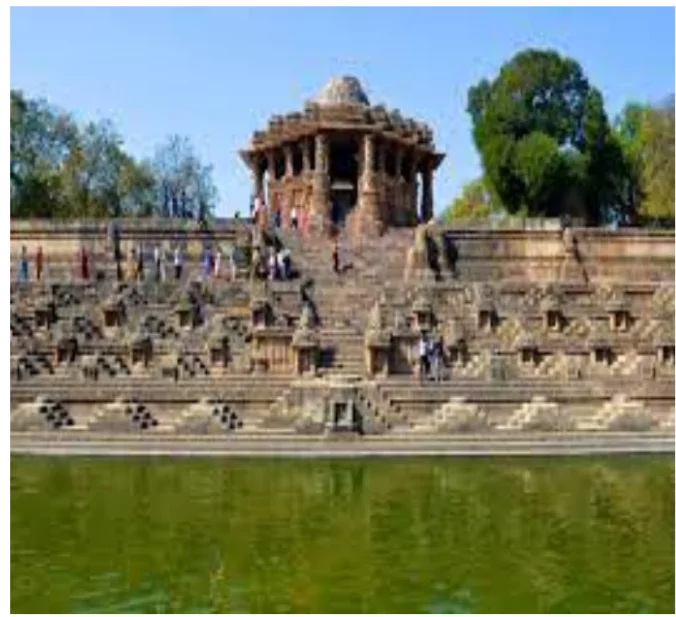Introduction
West Indian Nagara temples, influenced by the Nagara style of North Indian architecture, feature towering shikharas, intricate carvings, and ornate mandapas, reflecting the region’s unique cultural and religious heritage.
Characteristics of Temples in Western India:
- Temples in western India, spanning Gujarat, Rajasthan, and western Madhya Pradesh, showcase a variety of stones.
- Sandstone is common, while grey to black basalt appears in tenth to twelfth-century temple sculptures.
- Material Used: Soft white marble is seen in Jain temples in Mount Abu (tenth to twelfth century AD) and the fifteenth-century AD temple at Ranakpur [Rajasthan].
- Proximity to water bodies, becomes integral to temple architecture in the region.
Enroll now for UPSC Online Course

Modhera Sun Temple: Sacred Architecture and Artistry
- The Sun temple at Modhera was built in 1026 AD by Raja Bhimdev I of the Solanki Dynasty.
- Surya Kund: A massive rectangular stepped tank, Surya Kund, showcasing the influence of water bodies in sacred architecture. It features 108 miniature shrines carved between its steps.
- Wood Carving: The temple’s intricate carving and sculpture work reflect the influence of Gujarat’s wood carving tradition.
- Scientific Carving: The central small shrine faces east to allow the sun to shine directly on it during the equinoxes.
| Samlaji Region in Gujarat: It is a significant historical temple site, blending earlier regional traditions with a post-Gupta style. |
Enroll now for UPSC Online Classes
Conclusion
- West Indian Nagara temples exemplify the architectural brilliance and spiritual devotion of the region, serving as sacred landmarks that continue to inspire reverence and admiration among worshippers and visitors alike.
![]() April 10, 2024
April 10, 2024
![]() 1440
1440
![]() 0
0
